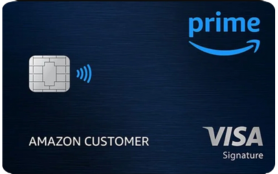Overview
Life insurance can be a great way to protect your loved ones financially if you unexpectedly pass away. But navigating the different types of life insurance available, and how they differ, can be confusing.
In this guide, we’ll explain the main differences between term life insurance and permanent life insurance, and break down some of the most common policy types. We’ll also help you figure out which life insurance is best for your situation and future needs.
At a Glance
| Term life insurance | Permanent life insurance | |
| Coverage duration | Temporary (usually up to 30 years) | Lifetime coverage |
| Death benefit | Fixed | Can be fixed or adjustable, depending on the policy |
| Cash value | No cash value | Generates cash value, which can be borrowed or withdrawn |
| Premiums | Less expensive; fixed for the duration of the policy | More expensive; can be fixed or adjustable, depending on the policy |
| Medical exam | Sometimes required | Usually required |
Term-Life Insurance
Term life insurance provides coverage for a set period of time, usually between five and 30 years. If you pass away during the term, your chosen beneficiary (like a spouse or child) will receive the death benefit from the policy.
If you outlive the term, the policy will usually terminate, and your beneficiaries won’t be entitled to any money. But some term life policies are convertible, meaning you can convert your policy to permanent coverage when the term ends.
Term life insurance is typically more affordable than permanent life insurance, especially if you purchase coverage when you’re young and healthy.
Permanent-Life Insurance
Permanent life insurance provides coverage for your lifetime. When you pass away, your beneficiary receives the death benefit, which can be used for any purpose. In most cases, the proceeds from a permanent life insurance policy are tax-free.
Most permanent life insurance policies generate cash value, which acts like a savings account. A portion of each premium payment goes toward the cash value, and when the account reaches a certain balance, you can withdraw or borrow the money. If you don’t repay what you borrow, it will reduce your death benefit.
Because permanent life insurance policies provide lifetime coverage and have cash value, they are typically more expensive than term life policies. Below, you can learn more about the different types of permanent life insurance and how they work.
Whole life insurance
Whole life insurance is the most common type of permanent coverage. It has level premiums and a fixed death benefit. The cash value grows at a guaranteed interest rate that’s determined by the insurer. Some whole life policies can also earn dividends based on the insurance company’s financial performance.
Universal life insurance
Universal life insurance is more customizable than whole life insurance. You have the option to adjust the frequency and amount of your premiums using cash value, and you can increase or decrease your death benefit if your needs change. The cash value in a universal life policy grows at a fixed interest rate that’s tied to the stock market.
Indexed universal life insurance
Indexed universal life insurance has the same features as universal life insurance. The difference is that the cash value growth is tied to the performance of a stock market index, like the S&P 500. Indexed universal life insurance offers higher growth potential when the index does well, but you can also lose money if the index performs poorly, so it’s not without risk.
Variable life insurance
A variable life insurance policy has fixed premiums and a guaranteed minimum death benefit. The cash value gets invested in subaccounts, like stocks and bonds, that you choose when you open the policy. If your investments perform well, your cash value will see more growth. However, market losses can cause you to lose cash value. Because of that, variable life insurance is typically considered to be higher risk and higher reward than universal life insurance.
Variable universal life insurance
As the name suggests, variable universal life insurance combines elements of variable life insurance and universal life insurance. It has adjustable premiums and a flexible death benefit. The cash value growth is linked to subaccount investments that you select. There’s no guaranteed minimum death benefit with this policy, so it’s much riskier than variable life insurance.
Final expense life insurance
Final expense life insurance, also called burial insurance, is a type of whole life insurance. Most final expense policies use guaranteed issue or simplified issue underwriting, which means they don’t require a complete medical exam and are easier to qualify for.
Final expense policies are intended to cover funeral costs, final medical bills, and other end-of-life expenses. They provide much smaller death benefits than traditional whole life insurance policies because they aren’t medically underwritten. Many life insurance companies only offer $50,000 or less in final expense life insurance.
How to Choose the Right Type of Life Insurance
When deciding what type of life insurance is best for your needs, there are a few things to consider:
Your current financial responsibilities: Think about the financial responsibilities that you currently have, like mortgage payments, child care, or private school tuition, that might fall on your partner if you were to pass away. A term life insurance policy would make sure those expenses were covered until your kids were grown or the mortgage was paid off. Term life insurance is often the preferred policy for younger people who want the most affordable life insurance coverage.
Your long-term financial goals: If your long-term financial goal is to leave money to your heirs after you pass away, a permanent life insurance policy might be the right solution. These policies will automatically pass money to your heirs after you die without going through the probate process. Some permanent policies, like indexed universal life insurance, can also help you build wealth if you’re willing to take on some risk.
Your life stage: Your stage in life at the time of purchasing life insurance can help determine what type of policy is best. For example, if you have a young family, term life insurance is sometimes the best option. However, if you’re getting older and want to allocate money for your end of life expenses, burial insurance could be a better choice. If you’re not sure what type of life insurance is best for current needs, you can always speak to a licensed life insurance agent.
The Point
The right type of life insurance for you will depend on your individual situation. Term life insurance is more affordable and can be a great option for young families. But if you outlive the term, you won’t receive any benefits.
Permanent life insurance offers lifetime protection, so it’s more expensive. But most policies build cash value, which can be accessed while you’re living, or left to your beneficiaries after you pass away.
Both term life insurance and permanent life insurance have advantages and drawbacks. Before you choose a policy, consider your current financial obligations and your future financial needs.









 by your friends at The Daily Navigator
by your friends at The Daily Navigator



